Military Museums & Sites: Luxembourg
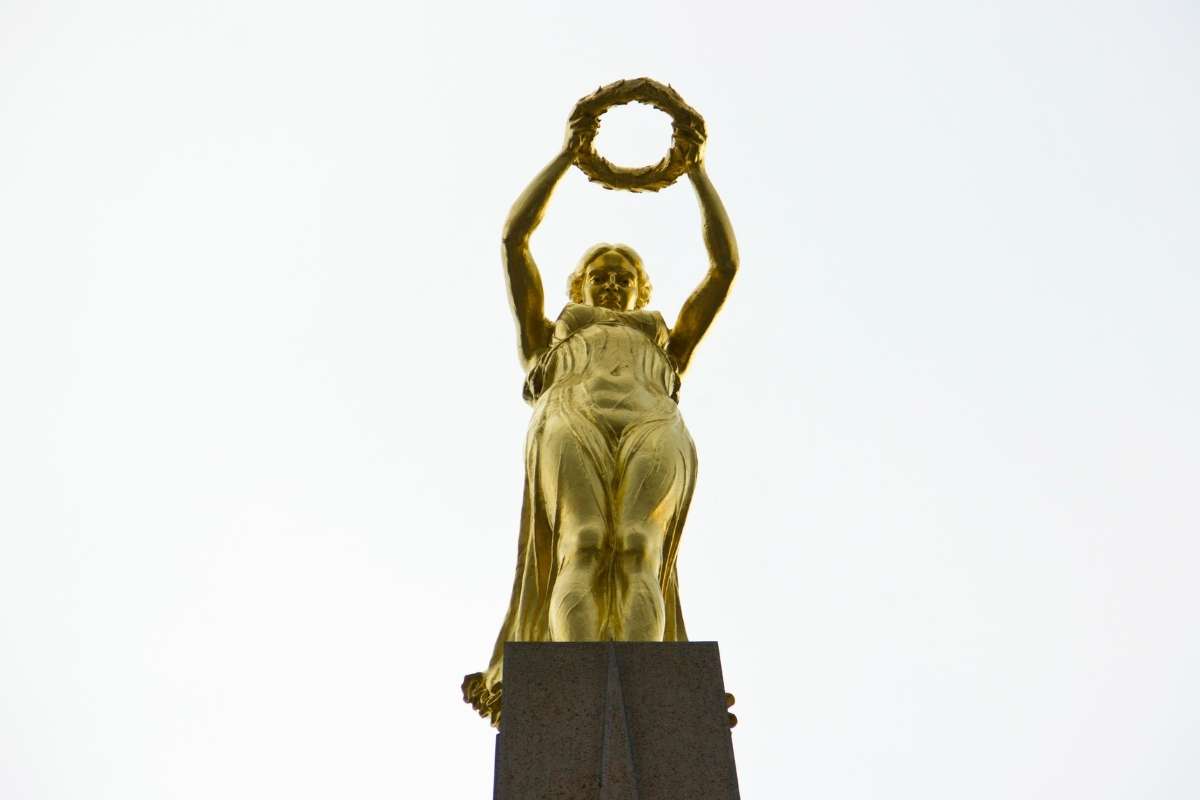
CSL Mag
Located in the center of Europe, Luxembourg has always been of great strategic military importance. A series of different powers have laid claim to the territory since the Middle Ages. The foundations of Luxembourg City are fused with many military fortifications and defensive structures which remain an important part of the city’s character today. More recently, and poignantly, the two World Wars had tremendous impact in Luxembourg which was at the heart of the conflict as war swept across Europe. The Luxembourgish experience of these events is commemorated in a series of museums and memorial sites located all over the country.
National Museum of Military History
This museum is a must see for anyone with an interest in the history of World War II and the Battle of the Bulge. As the Ardennes occupies the area between Luxembourg and Belgium, almost all military action in Luxembourg during WWII took place during that extremely pivotal battle. The displays include a vast selection of authentic uniforms, weapons, equipment, vehicles, and personal belongings, from the tiniest spoon or diary to the biggest tank or field gun. The exhibit are a series of dioramas recreating various scenes of the Ardennes counteroffensive down to the finest detail, utilizing real, recovered military relics to make you feel like you’re really there. The museum offers a well balanced glimpse into the experience of both Allied and German troops who fought during this period.
The second story of the museum gives an overview of the Luxembourgish military as it has evolved through the present day. All of the displays are in French, German, Luxembourgish and English, with audio guides available in each languages.
Where: Bamertal 10, L-9209 Diekirch, Phone: 808908, Email: mnhmdiek@pt.lu
When: Tuesday – Sunday 10am–6pm
Cost: Adults 5€, Children and young people (10-18) 3€, Students (with ID card) 3€, Children under 10 Free, Military in uniform 3€, Veterans of WWII Free, Incapacitated persons Free, Group rate (10 or more visitors) 3€ per person, Guided tours on request (10 or more visitors) 5€ per person. Electronic audio guides available for extra fee of €3.
Website
National Resistance Museum
The National Resistance Museum explores the history of Luxembourg between 1940 and 1945. Luxembourg was invaded by Germany in May 1940 and annexed soon after, remaining a German territory until its liberation by the Allies in 1945. Nazi propaganda and terror campaigns during the occupation encouraged citizens to shift their national loyalty to Germany and to identify as German, arguing that Luxembourgers were ethnically Germanic. An extensive Nazification and Germanification process was put into motion, which included the banning of French as a language, the Germanisation of French names, and the dismemberment of Luxembourg state institutions.

The museum includes many displays full of art, photos, and objects concerning all aspects of Luxembourgish resistance while the Nazis were present. The first floor is devoted to artifacts and stories related to the experiences of some of the thousands of Luxembourgish people who were transported to concentration camps, and the treatment of Jewish residents of Luxembourg following the invasion. There are fascinating stories about members of the resistance who committed acts of sabotage and secretly distributed patriotic pamphlets. The museum also explores the passive resistance that took place during the occupation as Luxembourgers took part in strike action. Many wore small brooches and amulets with patriotic Luxembourgish flags or red lion symbols to display their national pride, which you can see throughout the museum.
There is a constant cycle of temporary exhibitions, with a new exhibition shown approximately every six months. The main exhibition languages are French and German, with audio guides available in French, German and English, and some sections of text in all three languages.
Where: Place de la Resistance, L-4041 Esch-sur-Alzette
When: Tuesday – Sunday, 2-6pm
Cost: Free
Website
Deportation Memorial and Museum
During Luxembourg’s German occupation, the Hollerich railway station served as the main departure point for many Jewish citizens of Luxembourg who were destined for ghettos or death camps. It was also from here that the journey began for thousands of young Luxembourgish men and women forced to join German labour and military services. Political “undesirables”, many with their entire families in tow, were also deported from this point to join work camps in Germany.
Today a memorial and museum commemorate the victims of the Nazi regime. The displays are in Luxembourgish but gallery guidebooks translated into German and English are available.
Where: 3A, rue de la Déportation, L-1415 Hollerich, Phone: 2478 8191
When: Tuesday – Thursday, 9-11.30am, 2-4.30pm. Ring the bell on the door facing the street to gain entry. Guided tours and group visits can be arranged by contacting the museum either by telephone or email on secretariat@cdref.etat.lu
Cost: Free
Website
- Tip: There is a further display of objects relating to the period when Luxembourg was under Nazi occupation in the City History Museum. These items are in the permanent display galleries.
Museum of the Ardennes Counteroffensive, Clervaux
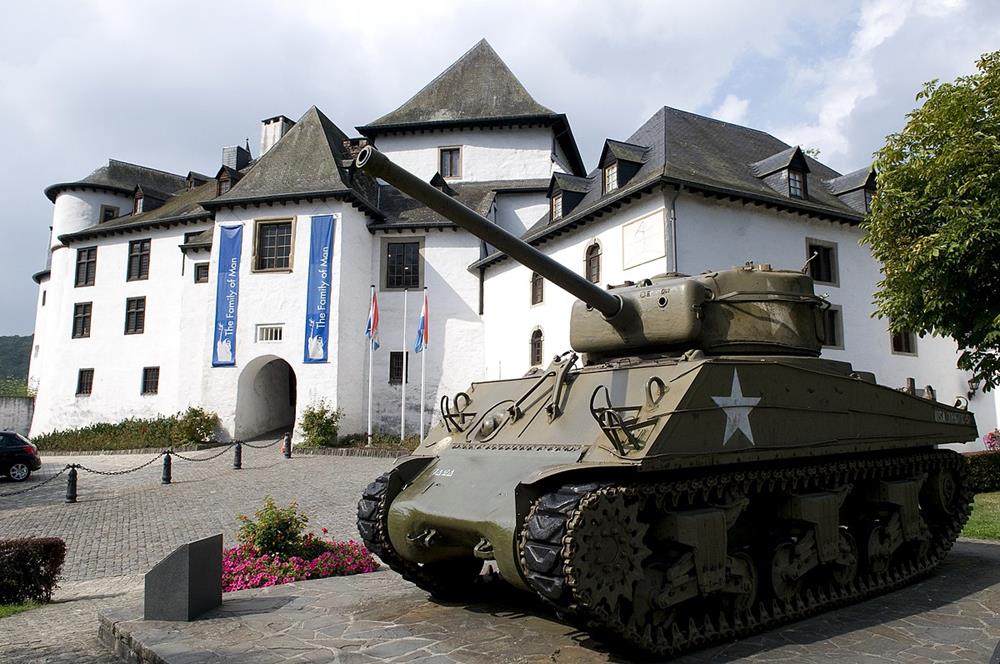
German forces launched an attack on Allied forces in the Ardennes region on 16 December 1944. Initially this offensive was successful, and the Germans were able to force back the middle of the Allied front line, giving the appearance of a “bulge” which gave the battle its name. As the assault began, US Army forces headquartered in Clervaux were surrounded.
Clervaux Castle, which houses the museum itself, suffered major damage during these events. The exhibitions in the museum display a variety of uniforms and weapons belonging to those on both sides of the conflict, with detailed maps and information on the battle as it unfolded. Like the National Museum of Military History, this museum has dioramas of the battle as well.
Where: Chateau de Clerveaux, L-9712 Clervaux, Phone: 26910695
When: Saturday & Sunday, 10am-6pm.
Cost: Adults 3.50€, under 18’s free, group rate 2.50€, students over the age of 18, or holders of Hostelling International card €2.50. Discount tickets available in combination with a visit to the Castle Replicas museum.
Website
Museum of the Battle of the Bulge and Remembrance Walk 1944-5, Wiltz

The town of Wiltz was the center of heavy fighting during the Battle of the Bulge as the German forces and the US Army pushed the front line back and forth in the course of the hostilities. The museum here recounts the events of the Battle of the Bulge and has an impressive collection of associated documents and objects to display. The model displays highlight some of the most important parts of the Ardennes counteroffensive as they affected Wiltz, including: the Battle of the Bulge; the period before conscription was introduced from 31st August 1942; the strike and martydom of six local citizens; Wiltz’s liberation on 10th September 1944; GIs meeting Wiltz residents; St Nicholas day with GIs; the start of the Battle of Bulge (including the 28th Infantry Division preparing for combat and the adversaries around Schumann’s Eck); and the end of the battle on 21 January 1945.
The Remembrance Walk memorial trail leads you into the woods at the Schumanns Eck, the scene of bitter fighting between German and American troops in a strategically important skirmish during the Battle of the Bulge. Foxholes and bomb craters are still visible. The trail begins at the battle-ruined home of a local family and includes information panels along the way featuring contemporary photography of the harsh winter conditions and details of the movements of the battle.
Where: Museum of the Battle of the Bulge, Chateau de Wiltz, L-9516 Wiltz Phone: 95 74 44.
When: Museum opening hours: Monday – Saturday 9am-12, 14.00-17.00. In July and August Monday-Saturday 9am-18.00. For groups of ten visitors or more the museum can open on request.
Cost: Adults €3.50, with audio guide €5.50. Children and students under 21 years of age: Free. Guided tour €35. The Remembrance Trail is free, and self guided.
Website
- Tip: A map of the 3km route of the Remembrance Walk can be found here. Information leaflets are also available from the National Military History Museum in Diekirch.
385th Bomb Group Memorial & Museum
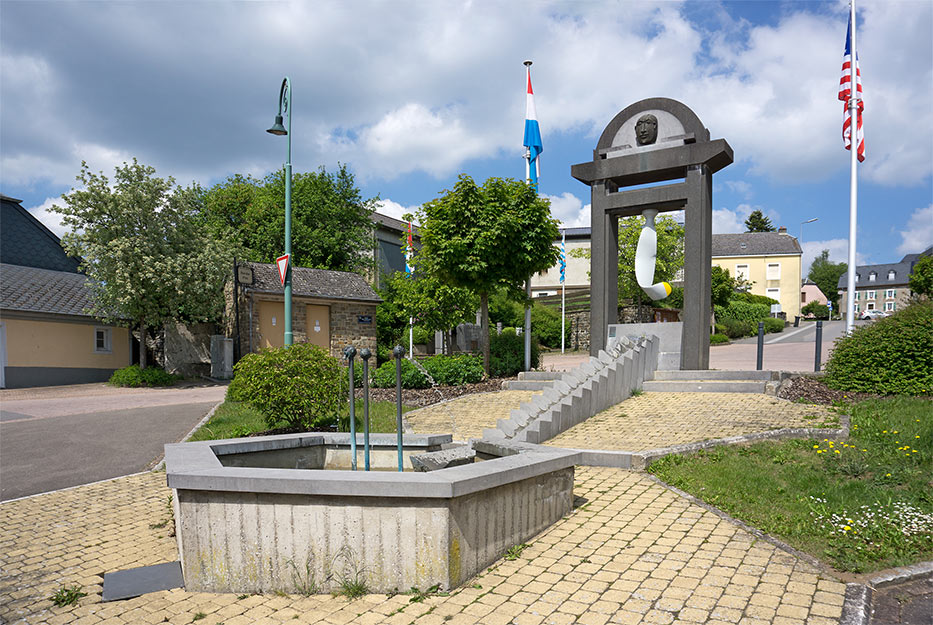
The memorial in Perlé commemorates the mid-air collision of two American B-12 bombers in the sky above the town in July 1944 as they returned from bombing raids over Germany. Only two of twenty total airmen survived the crash. The accompanying museum explores life as an airman in the US military in World War II, and is a treasure trove of war artifacts, many donated by former servicemen and their families. Roger, the proprietor and tour guide of the museum, is a Luxembourgish citizen who was nine when the country was liberated, and he maintains the museum as an act of gratitude to the American troops. He personally explains the history behind the museum’s collection on the free-of-charge tour.
Where: 6 rue de l’Eglise, L-8826 Perlé
When: Open by appointment only, please contact them via email on museum385BG@yahoo.com to arrange a visit.
Cost: Free
Website
Tip: This is directly across the street from the amazing pizza restaurant NizArt. The owner Nizar El Hajjaoui has won the title World Champion of pizza! Be sure to book a table, as it can fill up quickly…for good reason!
General Patton Museum

This museum is dedicated to General George S. Patton, commander of the United States 3rd Army during World War II. At the beginning of the Battle of the Bulge, he had rapidly mobilized his troops to relieve US military personnel under heavy bombardment in Bastogne, Belgium. Following the relief of Bastogne, the 3rd Army continued to advance through Luxembourg, pushing back the German front lines. He led the troops as they finally liberated the town of Ettelbruck on December 25, 1944. The town’s Patton museum includes more than 1,000 documents and photographs relating to the German invasion, as well as recovered weapons and equipment recovered on the Ardennes battlefield.
Where: 5 Rue Dr. Klein, L-5409 Ettelbruck, Phone: 810322, Email: patton@patton.lu
When: Tuesday – Sunday, 10am-5pm.
Cost: Adults 5€, Children 3€, Groups of more than 10 visitors, 3€. Guided tours available on request, 25€.
Website
- Tip: Whilst you’re in Ettelbruck, you can also pay a visit to the General Patton Monument. The memorial, statue and Sherman tank can be found on Avenue JFK, overlooking the bridge over the River Sure.
Luxembourg American Cemetery and Memorial

Luxembourg American Cemetery consists of 17 acres of perfectly maintained lawn adorned with the pristine white marble gravestones of more than 5,000 American soldiers, most of whom lost their lives during the Battle of the Bulge. The cemetery’s fan-shaped design consists of nine sections, interspersed with majestic trees, expansive rose and rhododendron beds, and four fountains. Reminiscent of Normandy, this cemetery is a beautiful and sobering site that can help put the horrible toll of war into perspective. General George S. Patton, head of the U.S. Third Army during World War II, is buried here under a plain white cross along with the rest of his troops. You can’t miss the impressive Memorial Chapel, adorned with ornate bronze doors, a beautiful mosaic ceiling, and vibrant stained glass windows, as you enter through the front gates.
Where: 50 Val du Scheid, 2517 Luxembourg
When: Open daily from 9am-5pm
Cost: Free
Website
German War Cemetery and Memorial
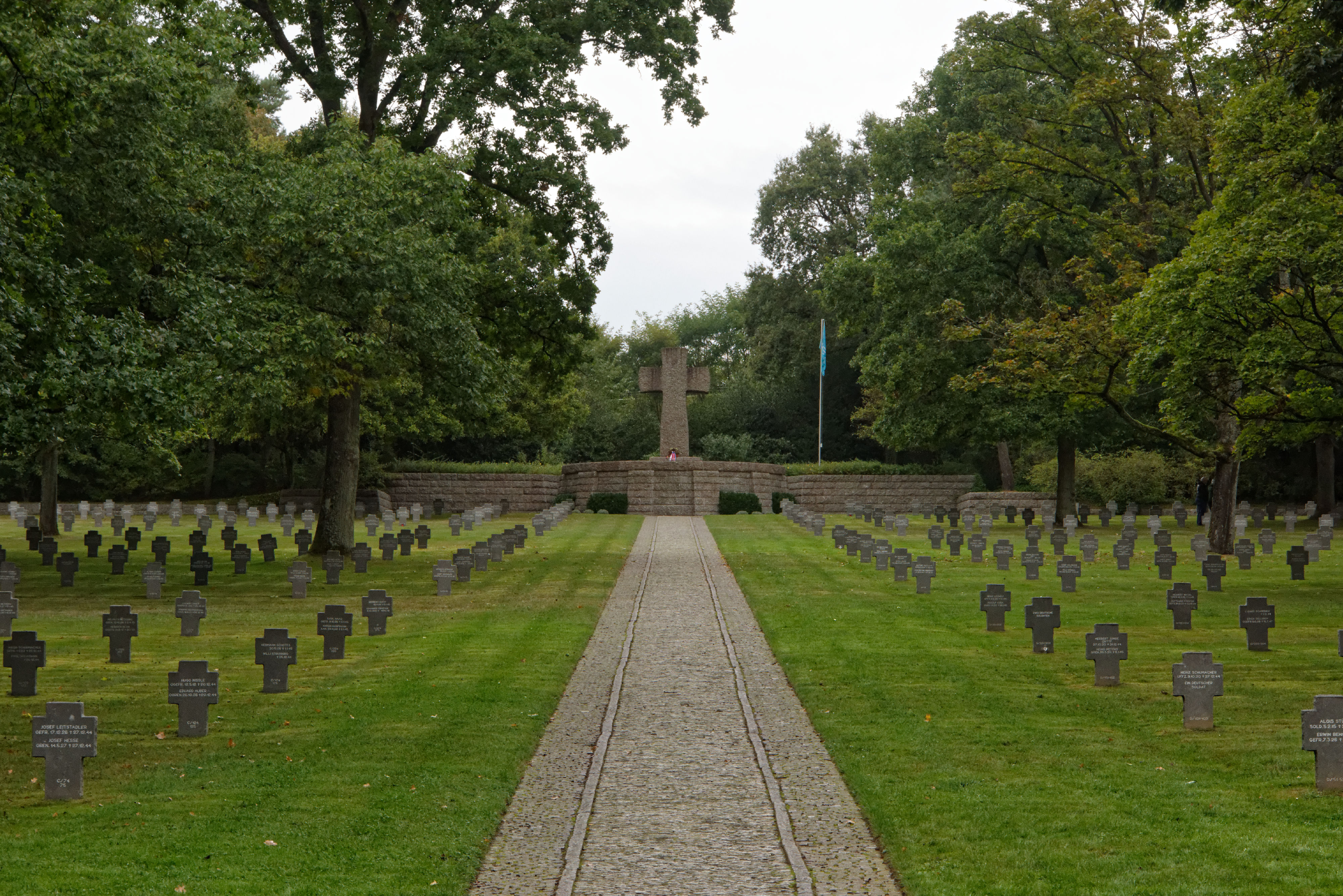
The Sandweiler German war cemetery contains the graves of 10,913 German servicemen who died in the Battle of the Bulge. Of these soldiers, 5,599 were buried by the American war graves service during the war. Following an agreement reached between Germany and Luxembourg in 1952, 5,286 bodies were moved to Sandweiler from 150 cemeteries throughout Luxembourg. This naturalistic cemetery consists of rows of dark stone crosses interspersed with trees, leading to a large, central monument at the end of the main pathway. This cemetery is much smaller than the American cemetery as there are four soldiers buried under each gravestone, and lacks the pomp and splendor of its counterpart.
Where: Rue d’Itzig, L-5974 Sandweiler
When: Open 24 hours, daily
Cost: Free
- Tip: The American and German War Cemeteries are located within a short car journey of one another, or a 20 minute walk! A visit to both sites is a poignant reminder of the cost of armed conflict.
Museé Dräi Eechelen
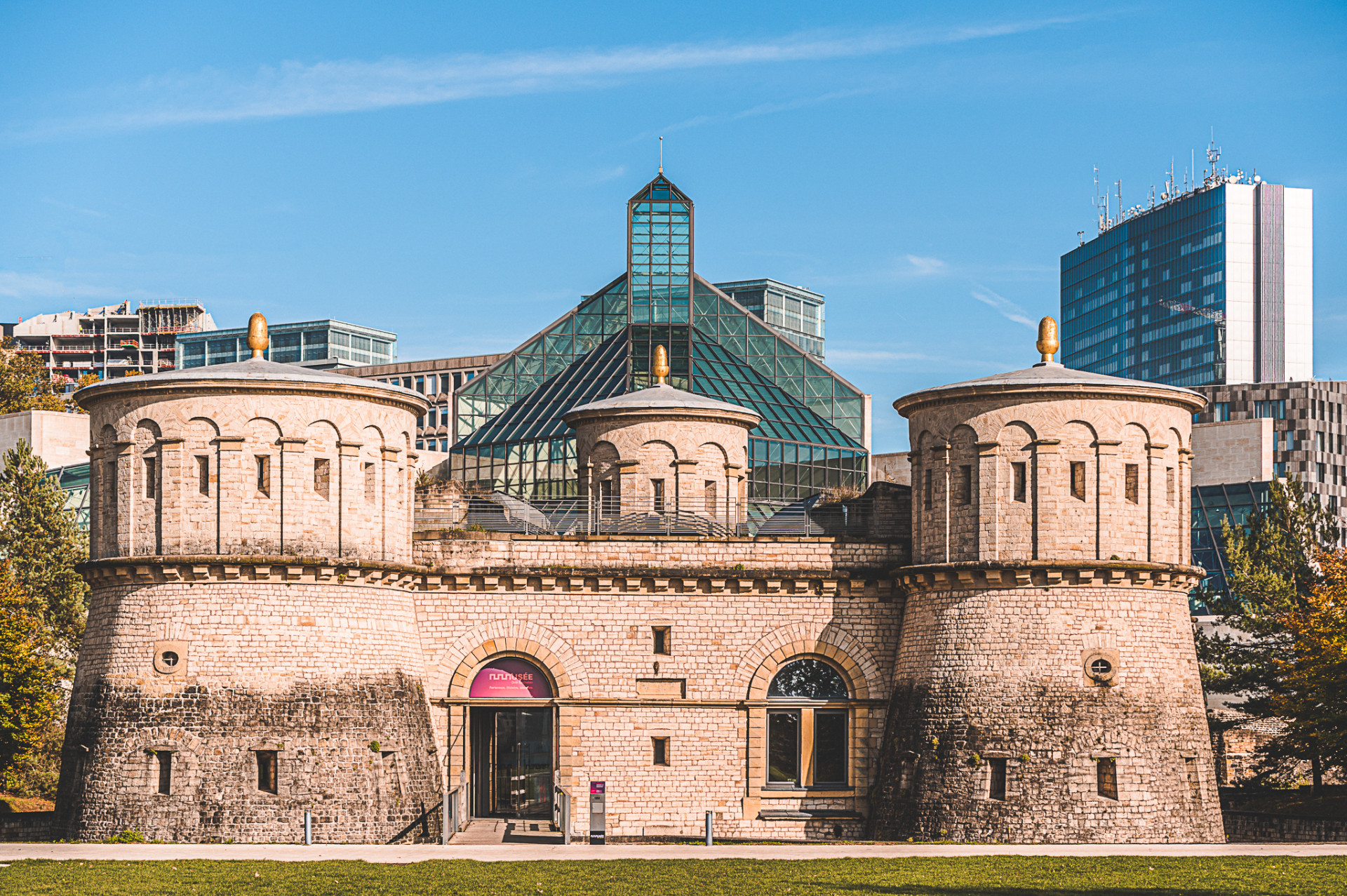
The museum “Dräi Eechelen” is located in the extraordinary restored keep of the fort Thüngen in Luxembourg City, built in 1732-33. More than 600 objects and documents illustrate each different era of the fortress and its influence on Luxembourg’s history. The tour begins in the Middle Ages with Luxembourg’s capture by the Burgundians in 1443, and ends with the construction of the Adolphe Bridge in 1903. There is a room dedicated to historical photos which present the fortress before and after it was razed. Thüngen is the only freestanding fort left in the city, and is nicknamed Dräi Eechelen, or Three Acorns, after the acorns which decorate each of the three towers.
There is a changing exhibitions program. Exhibition text is delivered in several languages. Audio guides are available in French, English, German and Luxembourgish. The museum also run a series of guided tours (in French, German and Luxembourgish) around the fort and into the city, some of which include special access to tunnels not usually open to members of the public.
Where: 5 Park Dräi Eechelen, L-1499 Luxembourg, Phone: 264335
When: Sunday – Monday 10am-6pm, Wednesdays 10am-8pm.
Cost: 5 € (with free entry for Friends of the Museum, students under the age of 26, and ICOM members)
Website
- Tip: For a comprehensive walking tour of the city center fortifications, why not take a look at this free leaflet published by the Luxembourg City Tourist Office? It’s available from their office, or you can download the Vauban Circular Walk here. The route is named after Sébastien le Prestre de Vauban, the French military engineer who oversaw massive reconstruction of the city defenses during the second half of the seventeenth century. The city’s apparent impregnability led to it being dubbed the “Gibraltar of the North”.
Bock Casemates (TEMPORARILY CLOSED)
The rocky cliff, named the Bock, high above the River Alzette, forms a natural fortification which was exploited by the founders of Luxembourg City. In 963 Siegfried, Count of the Ardennes and first ruler of Luxembourg, built his castle here. The castle and cliff were the starting point for the man made defenses constructed and expanded over the next nine hundred years and which formed the basis for the development of the surrounding city.
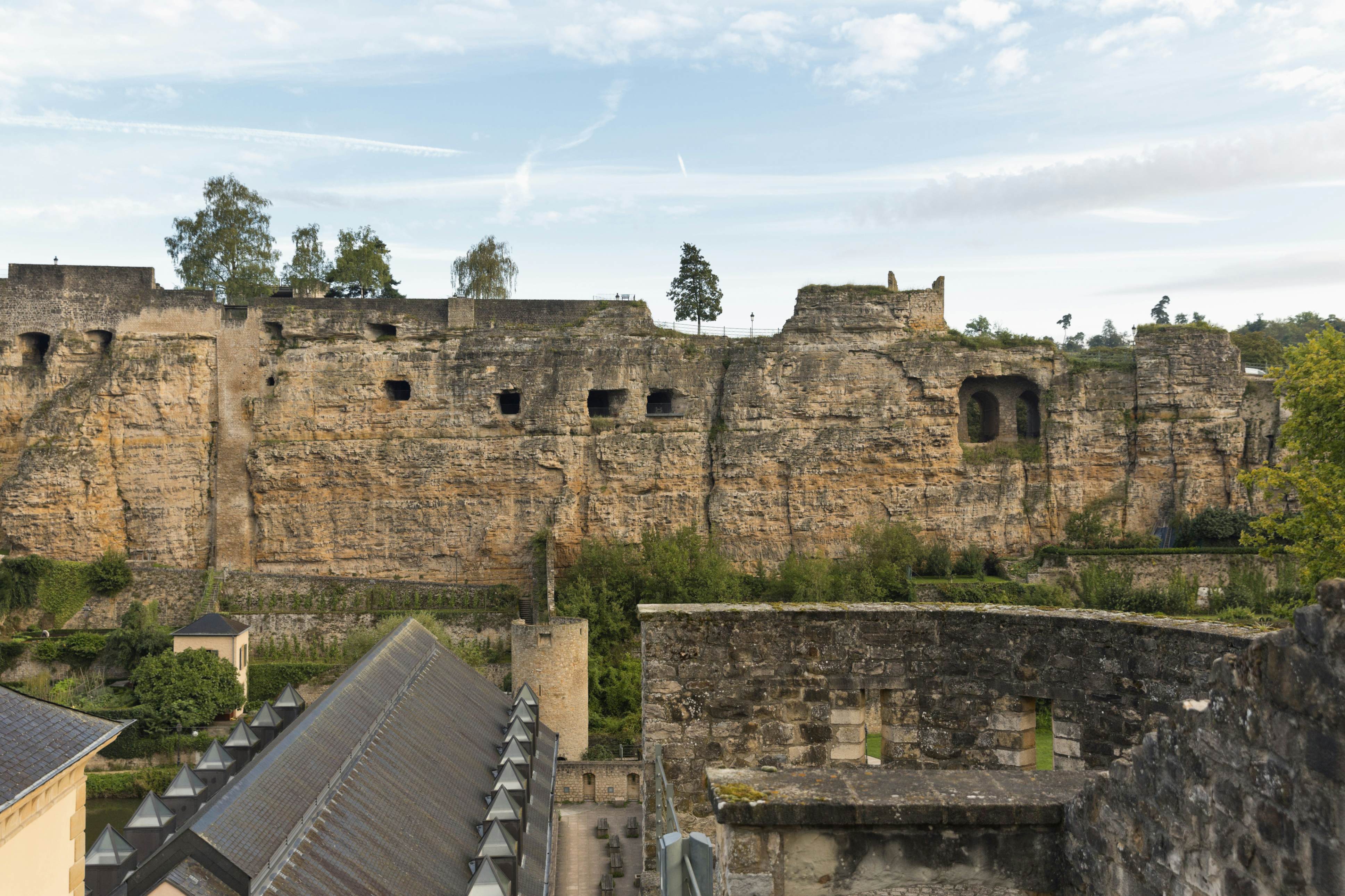
The excavation of the caves, or casemates, was begun in the mid seventeenth century when Luxembourg was under Spanish rule. The caves was made up of a system of chambers and tunnels which ran to a length of over 23 kilometers! During the following century further excavations were made, to include barracks, workshops, kitchens and even stables. Despite the fact that parts of the tunnels were dismantled in the nineteenth century, there are still plenty for visitors to explore. You can still see where cannon slots were constructed and barracks where hundreds of soldiers at a time could be accommodated, as well as much more.
Where: 10 Montée de Clausen, L-1343 Luxembourg, Phone: 222809
When: Open daily from 1 March – 8 November, 10am-5pm.
Cost: Adults 4€, students and group rate €3, children €2.
- Tip: This is a fun place to explore with children, with lots of tunnels and caves to hide in. However, do make sure that your little ones are happy to do lots of walking and can manage stairs easily.
Gëlle Fra
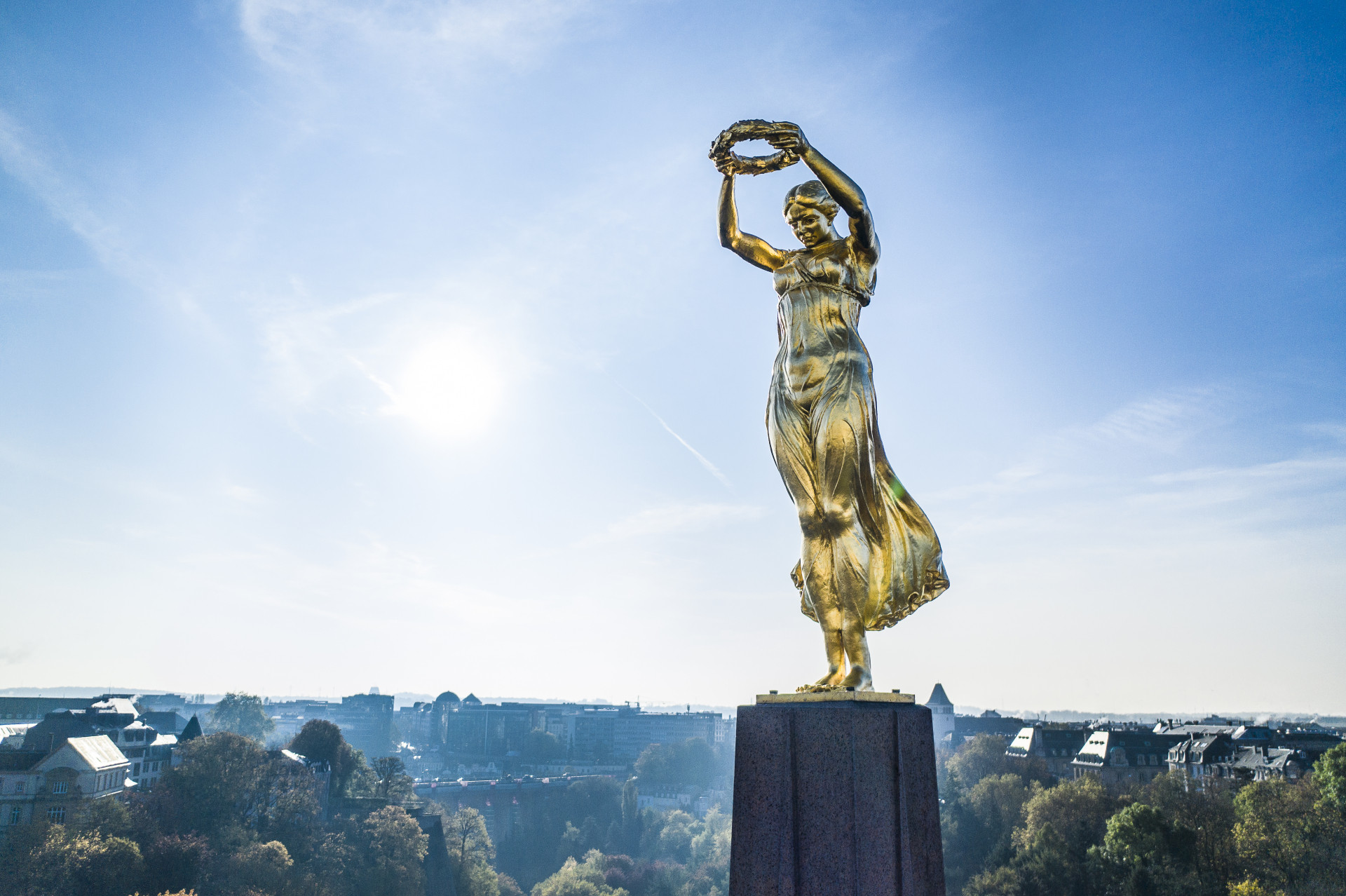
The Gëlle Fra, or Golden Lady, was erected as a memorial to the Luxembourgish soldiers who had volunteered to serve in the French military during World War One. Germany occupied Luxembourg despite the state having declared itself neutral. Luxembourgish casualties in World War One eventually amounted to around one per cent of the total population.
During Nazi occupation in World War II this important symbol of resistance and freedom was dismantled by the Germans. It was reinstated in 1985.
Where: Place de la Constitution, Luxembourg City
When: Anytime. Unless she is on tour; in 2010 she decorated the Luxembourg pavilion at the World Expo in Shanghai.
Cost: Free
Final Tip
Luxembourg City Tourist Office has also devised a self guided walking tour of the city center which takes in significant sites relating to the events of World War II, including the Golden Lady. It is available from the tourist office or can be downloaded here.


